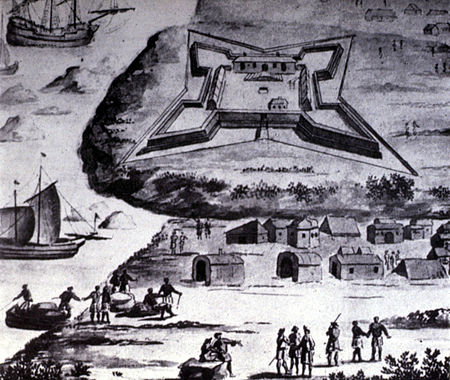Nasal consonant
| |||||||||||||||||||||||||||||||||||||||||||||||||||||||||||
Read other articles:

Transylvanian lawyer and revolutionary (1824–1872) This article is about the historical figure. For other uses, see Avram Iancu (disambiguation). This article needs additional citations for verification. Please help improve this article by adding citations to reliable sources. Unsourced material may be challenged and removed.Find sources: Avram Iancu – news · newspapers · books · scholar · JSTOR (January 2014) (Learn how and when to remove this message)…

Hoysala King Veera Ballala IIHoysala KingReignc. 1173 – c. 1220 CEPredecessorNarasimha ISuccessorVira Narasimha IISpouseCholamahadevi,KetaladeviIssueVira Narasimha II, SomaladeviDynastyHoysala Hoysala Kings Nripa Kama II1026–1047Vinayaditya1047–1098Ereyanga1098–1102Veera Ballala I1102–1108Vishnuvardhana1108–1152Narasimha I1152–1173)Veera Ballala II1173–1220Vira Narasimha II1220–1235Vira Someshwara1235–1263Narasimha III1263–1292Veera Ballala III1292–1343Ha…

Si ce bandeau n'est plus pertinent, retirez-le. Cliquez ici pour en savoir plus. Certaines informations figurant dans cet article ou cette section devraient être mieux reliées aux sources mentionnées dans les sections « Bibliographie », « Sources » ou « Liens externes » (avril 2016). Vous pouvez améliorer la vérifiabilité en associant ces informations à des références à l'aide d'appels de notes. Pour l’article homonyme, voir Lamoricière. Louis Juc…

Cattedrale di Santa Maria AssuntaLa facciata della cattedraleStato Italia RegioneLiguria LocalitàSavona IndirizzoPiazza del Duomo, Savona (SV) Coordinate44°18′27.19″N 8°28′55.91″E / 44.307553°N 8.482197°E44.307553; 8.482197Coordinate: 44°18′27.19″N 8°28′55.91″E / 44.307553°N 8.482197°E44.307553; 8.482197 Religionecattolica di rito romano TitolareMaria Assunta Diocesi Savona-Noli Consacrazione1605 Stile architettonicobarocco Inizio cos…

この項目には、一部のコンピュータや閲覧ソフトで表示できない文字が含まれています(詳細)。 数字の大字(だいじ)は、漢数字の一種。通常用いる単純な字形の漢数字(小字)の代わりに同じ音の別の漢字を用いるものである。 概要 壱万円日本銀行券(「壱」が大字) 弐千円日本銀行券(「弐」が大字) 漢数字には「一」「二」「三」と続く小字と、「壱」「弐」…

OpenStreetMap view Olympic harbor for the 2004 Summer Olympics in Athens The Agios Kosmas Olympic Sailing Centre hosted the sailing events at the 2004 Summer Olympics in Athens, Greece.[1] The center is located about four miles from downtown Athens along the coast. It was officially opened on August 2, 2004, a few weeks before the Olympics, though test events were conducted at the site in August 2002 and 2003. The center had a capacity of 1,600 for the medal ceremonies. After the Olympic…

45°17′25″N 118°00′26″W / 45.29028°N 118.00722°W / 45.29028; -118.00722 AirportLa Grande/Union County AirportIATA: LGDICAO: KLGDFAA LID: LGDSummaryAirport typePublicOwnerUnion CountyServesLa Grande, OregonElevation AMSL2,717 ft / 828 mRunways Direction Length Surface ft m 12/30 6,261 1,908 Asphalt 17/35 3,400 1,036 Asphalt Statistics (2018)Aircraft operations (year ending 8/28/2018)16,000Source: Federal Aviation Administration[1] La Grand…

Statistics of the U.S. Bureau of Labor Statistics The annual percent change in the US Consumer Price Index for All Urban Consumers is one of the most common metrics for price inflation in the United States. The United States Consumer Price Index (CPI) is a family of various consumer price indices published monthly by the United States Bureau of Labor Statistics (BLS). The most commonly used indices are the CPI-U and the CPI-W, though many alternative versions exist for different uses. For exampl…
2020年夏季奥林匹克运动会波兰代表團波兰国旗IOC編碼POLNOC波蘭奧林匹克委員會網站olimpijski.pl(英文)(波兰文)2020年夏季奥林匹克运动会(東京)2021年7月23日至8月8日(受2019冠状病毒病疫情影响推迟,但仍保留原定名称)運動員206參賽項目24个大项旗手开幕式:帕维尔·科热尼奥夫斯基(游泳)和马娅·沃什乔夫斯卡(自行车)[1]闭幕式:卡罗利娜·纳亚(皮划艇)[2…

密西西比州 哥伦布城市綽號:Possum Town哥伦布位于密西西比州的位置坐标:33°30′06″N 88°24′54″W / 33.501666666667°N 88.415°W / 33.501666666667; -88.415国家 美國州密西西比州县朗兹县始建于1821年政府 • 市长罗伯特·史密斯 (民主党)面积 • 总计22.3 平方英里(57.8 平方公里) • 陸地21.4 平方英里(55.5 平方公里) • �…

Artikel ini perlu diwikifikasi agar memenuhi standar kualitas Wikipedia. Anda dapat memberikan bantuan berupa penambahan pranala dalam, atau dengan merapikan tata letak dari artikel ini. Untuk keterangan lebih lanjut, klik [tampil] di bagian kanan. Mengganti markah HTML dengan markah wiki bila dimungkinkan. Tambahkan pranala wiki. Bila dirasa perlu, buatlah pautan ke artikel wiki lainnya dengan cara menambahkan [[ dan ]] pada kata yang bersangkutan (lihat WP:LINK untuk keterangan lebih lanjut). …

Danish football club Football clubLystrup IFFull nameLystrup IdrætsforeningNickname(s)LIFFounded20 February 1934; 90 years ago (1934-02-20)[1]GroundLystrup IdrætsanlægLystrup, AarhusCapacity200LeagueDBU Jyllands Serie 3WebsiteClub website Home colours Lystrup Idrætsforening is a Danish association football club currently playing in the DBU Jyllands Serie 3, one of the ninth tiers of Danish football. They play at Lystrup Idrætsanlæg in Lystrup, East Jutland. Histor…

Airport in Heilongjiang, China Not to be confused with Fuyun Airport. Fuyuan Dongji AirportIATA: FYJICAO: ZYFYSummaryAirport typePublicServesFuyuan, HeilongjiangLocationNongqiao TownOpened26 May 2014; 10 years ago (2014-05-26)Coordinates48°11′58.18″N 134°21′59.21″E / 48.1994944°N 134.3664472°E / 48.1994944; 134.3664472MapFYJLocation of airport in HeilongjiangRunways Direction Length Surface m ft 05/23 2,500 8,202 Concrete Statistics (2021)Pas…

Minor Scottish political party in the 1970s This article is about the Scottish National Party breakaway group from Dundee. For the Scottish branch of the British Labour Party, see Scottish Labour. Labour Party of Scotland FoundedEarly 1970sDissolved24 May 1973HeadquartersDundee, ScotlandIdeologyLabourismScottish nationalismPolitical positionLeft-wingPolitics of the United KingdomPolitical partiesElections The Labour Party of Scotland was a minor Scottish nationalist political party that was…

Human settlement in WalesOystermouthWelsh: YstumllwynarthShops in OystermouthOystermouthLocation within SwanseaArea2.01 km2 (0.78 sq mi)Population4,160 (2011 census)• Density2,070/km2 (5,400/sq mi)Principal areaSwanseaPreserved countyWest GlamorganCountryWalesSovereign stateUnited KingdomPost townSWANSEAPostcode districtSA3Dialling code01792PoliceSouth WalesFireMid and West WalesAmbulanceWelsh UK ParliamentGowerSenedd Cymru – Welsh …

French army police force during the Ancien Regime This article is about the pre-revolutionary French police force. For the current militarized Dutch police force, see Royal Marechaussee. For the episode of Grimm, see Maréchaussée (Grimm). This article has multiple issues. Please help improve it or discuss these issues on the talk page. (Learn how and when to remove these template messages) This article needs additional citations for verification. Please help improve this article by adding cita…

Colonial empire governed by Germany between 1884 and 1918 This article is about colonies of the German Empire. For the territories of Nazi Germany, see Reichskommissariat. For the Templer colonies in Israel, see German Colony. German colonial empireDeutsches Kolonialreich (German)1884–1920 Flag Coat of arms German colonies and protectorates in 1914StatusColonial empireCapitalBerlinCommon languagesGermanLocal: Swahili, Rwanda-Rundi (Burundi, Rwanda, Buha kingdom in Tanzania), Papuan, …

Play Without Words is a 2002 ballet by English choreographer Matthew Bourne with music by Terry Davies. The work is an adaptation of the Joseph Losey film The Servant, after the Robin Maugham novel of the same title. References Productions: Play Without Words. Royal National Theatre. 2009. Retrieved 2009-02-19. Elyse Sommer (2005). Matthew Bourne's Play Without Words Comes to BAM. CurtainUp. Retrieved 2009-02-23. External links Play Without Words official website at New Adventures vteLaurence Ol…

Milo in lattine Il Milo (è una bevanda a base di cioccolata e malto in polvere mischiata con acqua calda e latte molto diffusa in Australia, Papua Nuova Guinea, Filippine, Nuova Zelanda, Malaysia, Singapore, Thailandia, Giappone, Sudafrica e Colombia.[1] Prodotto da Nestlé, Milo fu originariamente sviluppato da Thomas Mayne a Sydney, in Australia, nel 1934.[2] Note ^ Nestle's new Milo recipe tested by a dietitian, su Stuff.co.nz, 13 luglio 2015. URL consultato il 24 novembre 20…

Beato Alberto Marvelli Laico NascitaFerrara, 21 marzo 1918 MorteRimini, 5 ottobre 1946 (28 anni) Venerato daChiesa cattolica Beatificazione5 settembre 2004 da papa Giovanni Paolo II Ricorrenza5 ottobre Manuale Alberto Marvelli (Ferrara, 21 marzo 1918 – Rimini, 5 ottobre 1946) è stato un ingegnere e politico italiano, beatificato nel 2004 da papa Giovanni Paolo II. Indice 1 Biografia 2 Culto 3 Note 4 Collegamenti esterni Biografia Secondo di sette fratelli, si trasferì con la …
